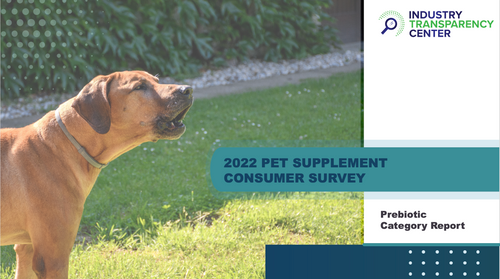TRACKING PREBIOTICS AGAINST A BACKDROP OF SUPPLEMENT INGREDIENT CATEGORIES ACROSS THE US, UK, GERMANY, ITALY & CHINA
Report Size and format: over 250 slides with supporting data; report provided as PDF and PPT
Almost $9 billion in new sales were added globally in 2021 as the marketplace continued to benefit from new consumers, increasing spend of existing consumers, an influx of capital and market trends such as personalization, a continued move to online channels and an ongoing frustration at pharma driving more natural solutions for consumers of all age groups and we’re seeing that carry over into 2022. Stress and mental wellness, beauty from within and active aging were all high growth categories that exhibited sustained growth even as the peak in immune health supplements waned through the year. Projections do call for a flattening of sales generally, but even so, these categories and others are projected to maintain modest growth for the next several years.
Amongst ingredient sets, multivitamins, vitamin D and magnesium were strong performers, as were botanicals such as ashwagandha, specialty ingredients such as collagen and microbiome modulating ingredients such as prebiotics and postbiotics. Industry staples omega-3s and probiotics, while less impressive from a numbers standpoint, continue to support both new and existing consumers’ usage as almost all categories reported more consumers consuming more than those consuming less of a particular ingredient.
Despite the fall off in immunity as a category, the gut health and digestive health benefits of prebiotics and emerging awareness of the linkage and connections between gut health and brain health have researchers (and consumers) beginning to explore these ingredients as part of their more robust solutions to managing stress and supporting mental wellness. On top of this, many previously probiotic-only formulas are now being reformulated to also contain prebiotics, at the same time that the understanding that a healthy microbiome is a huge asset as consumers continue to take more responsibility for their health.
The 2022 ITC Insights Supplement Consumer Survey Prebiotic Category Report, fielded in Spring 2022, walks readers through dietary and food supplement consumer buying behaviors and priorities across the US, UK, Germany, Italy and China. It measures how behaviors have changed over the past several years, especially 2019 through 2021. The survey includes 1,000 US, 500 UK, 500 German, 500 Italian and 1000 Chines users, all of whom use supplements to some extent. Starting with overall supplement use, including popular categories such as multivitamins, vitamin D and omega-3s, the report then dives specifically into users of prebiotic supplements indexing this category against others as it measures health issues and concerns, where they shop, how much they spend, what engenders trust in a brand, how they consider branded ingredients, then what they look for when purchasing prebiotics, where they get their information and even how they feel about sustainability.
Within the analysis, ITC has filtered the view based on age (for the purposes of this survey, the groups are 18-35, 36-45 and 46+), gender, and frequently the behaviors of regular versus irregular users. For ITC purposes, regular users are those that take a particular supplement more than 4 times per week.
Within the included extensive charts, viewers can see drivers of purchase and trust, influences and impactors, over-arching education and market gaps that lead to white space and opportunities. Knowing who these users are and what drives them is critical for ingredients companies as well as brands – for the former, they can channel their effort directly into the features and benefits that consumers are looking for, whether it is future priorities such as branded ingredient development, clinical research, influencer outreach and support, safety data, and for the latter – the secrets, by category to providing transparency and promoting repeat sales and lifetime value.
ITC Insights provided to complement most charts highlight the pertinent observations from our team. Where we have determined there is a demographic or category over- or under-indexing and where prebiotics users differ markedly from general supplement users we have dived deeper. Current macro-trends like sustainability and transparency and other parameters such as product attributes and labels have been specifically investigated across the three geographies and amongst the age and gender splits.
Increasingly, and borne by the ITC results, supplements are part of the overall health and wellness solution set of most consumers, and this continues to be so as we emerge from the pandemic, especially with categories of ingredients such as prebiotics. Over the past few years, even as in store purchasing has diminished in importance, channels of sale have propagated. Consumers across the board are buying more supplements through multiple channels and increasing spending. We see the emergence of three broad themes - in the US, supplements as part of a regimen that encompasses allopathic medicine, in Europe, a much more forward-thinking natural wellness regimen - with health condition target outcomes and concerns matching this split. In China, we see a broad wellness movement, but the factors driving purchase are as much about safety perception as they are about clinical science.
In nearly all supplement categories, the highest lifetime value consumers are captured young, and use products more than 4 times per week (ITC Regular Users). Across the board, the 2022 ITC results show that these consumers are ready and willing to engage, are motivated in part by clinical science and sometimes less so by their health care practitioners, and that they highly value transparency and will pay more for branded ingredients included in their finished products. With prebiotics, the middle age group (ages 35-54) is a demographic that cannot be ignored and is hungry for more information.
The 2022 report also investigates what attributes consumers are willing to pay more for, including branded ingredients, and specifically what attributes of branded ingredients. Most of the emerging categories and especially prebiotics show high enough elasticity to support a healthy margin for everyone, especially for the most transparent finished brands. And when it comes to labels themselves, not all information is valued equally - among geographies, age groups and even gender.
Other notes and how to interpret and use this report:
- This report is provided as a PDF and PowerPoint. At any time, purchasers can right click in the PowerPoint slide to obtain supporting data.
- The footers at the bottom of each slide describe the user/respondent set and numbers, and where helpful, the exact question asked.
- For questions that have answers that vary by degree, such as 'frequently' and 'often' or 'extremely' and 'very' types of answers, these will typically be grouped as Top 2 or Top 3 and this will be noted in slide footers.
Use this ITC report and these insights to:
- Get a jump on the competition with strategic and actionable intelligence
- Validate assumptions, strategy, investments and priorities
- Partner better with your customer set to win in your target market sectors
- Meet your consumers exactly where they are going












